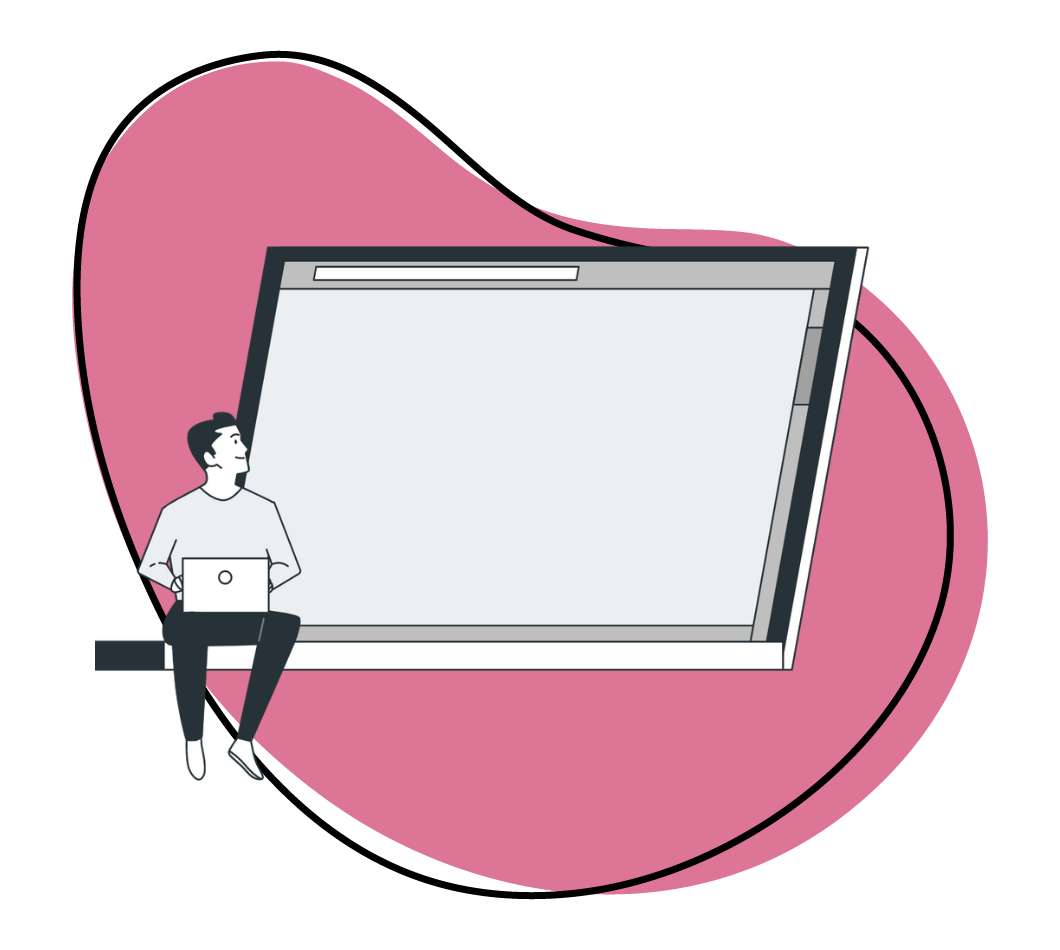In life, you’re constantly faced with choices. Should I choose an iPhone or an Android? Should I eat pasta or chicken for dinner? Should I watch a horror movie or a drama?
When shopping online, the same is true. In fact, it’s even worse. When you’re deciding what to eat for dinner, you might only have a couple of options. When browsing the web, you have thousands.
This is what leads marketers to Google Ads.
E-commerce is a fast-growing industry. No wonder, since most people prefer shopping online. Statista predicts that 2.14 billion people worldwide will be buying goods and services online in 2021. This is an increase from the 1.66 billion global digital buyers recorded in 2016.
Source: Statista
Since every product or service you sell online will have dozens of competitors, you need to be smart to get consumers interested in your products.
Why Use Google Ads to Generate Leads
Many ecommerce brands turn to Pay Per Click (PPC) marketing through Google ads to help them get in front of their ideal customer. The average small business using Google Ads spends between $1000 and $10,000 per month.
This actually makes sense. Google, after all, accounts for the majority of the search engine market share. To give you an idea, it processes more than 3.5 billion searches everyday. That’s a whopping 40,000 searches per second.
But Google Ads spending doesn’t automatically bring success. You can, after all, spend a lot but fail to generate a Return on Investment (ROI).
A common mistake in PPC advertising is assuming that customers will make a purchase as soon as they see your ad. Some will, but in reality, this doesn’t happen often. In fact, the average conversion rate for PPC ads on Google is just over 2% across all industries.
That means if you take this approach to PPC, 98% of your ad spend will be wasted.
In other words, you need to have a high ROI to run a profitable PPC campaign with Google Ads. The solution to this problem is treating your original PPC ads as an entry point into an effective sales funnel.
There will be two parts to your sales funnel. First, you’ll use landing pages to generate leads. Then you’ll warm them up using multi-channel content (primarily email marketing).
Let’s have a look at how most companies do this.
The Usual PPC Sales Funnel (Used By Everyone)
Most companies that run Google Ads will send the leads they are paying for to a landing page. A landing page is basically a standalone web page where a visitor is sent after clicking an ad. The aim of this page is to create a conversion somewhere on that page.
Companies generally try to convert the visitor in one of the following ways. They will offer a:
- Free trial
- Scheduled demo
- Free consultation
- Purchase of a product
Here’s a real-life example from the Instagram marketing platform Graminator, a product I picked out at random. This ad targets users searching for Instagram marketing.

Clicking through leads to the following page.
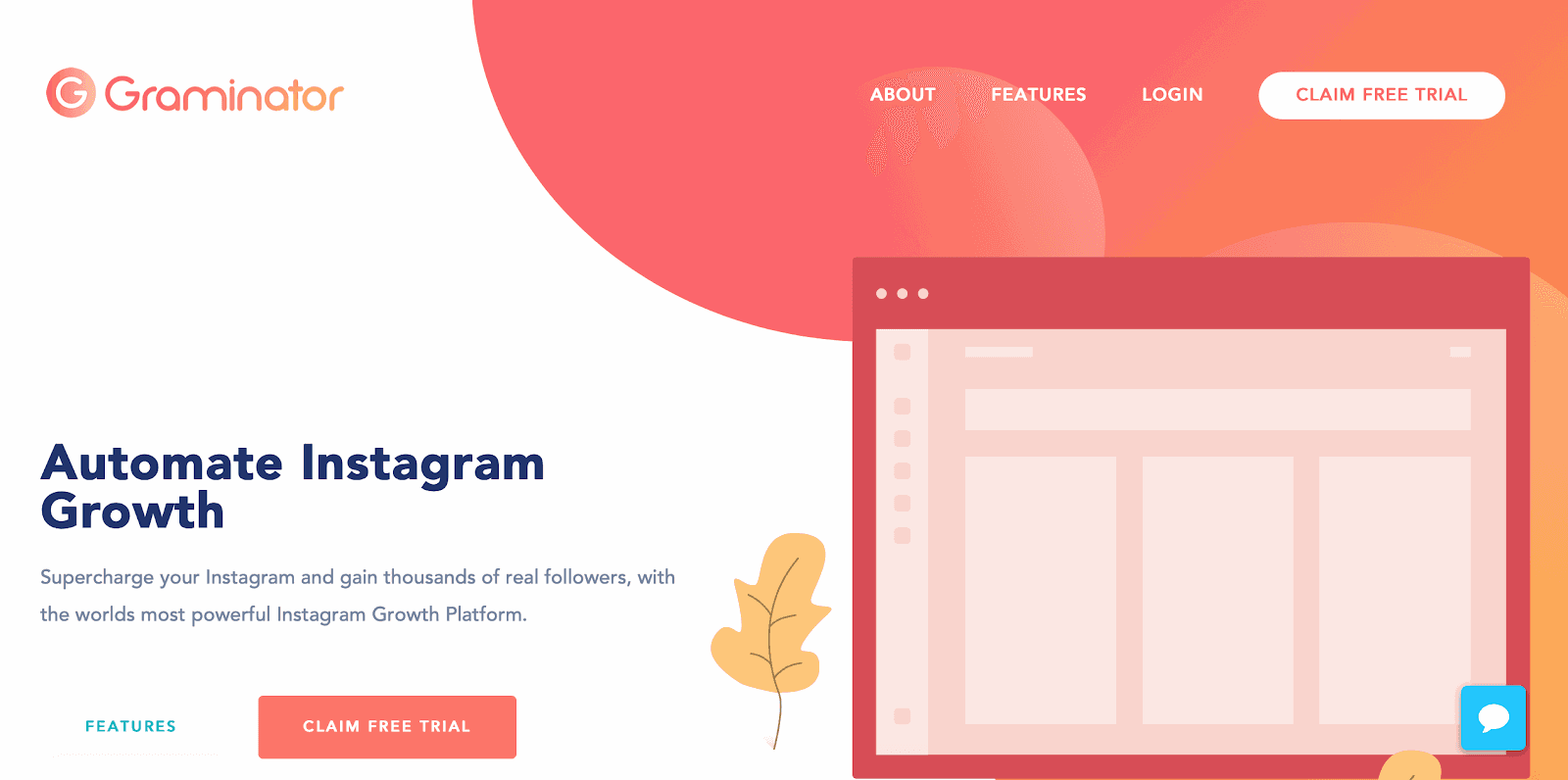
That was the sales funnel.
Now let’s take a step back for a minute. Here’s what this ad looks like against other ads competing for the same term.
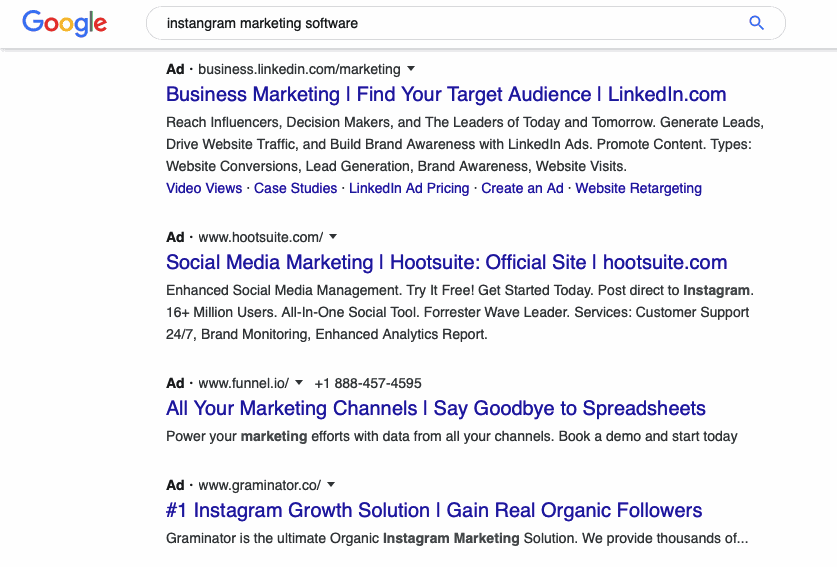
You’ll notice, it’s the fourth ad on the list.
The ad blends into the background. The landing page is also a duplicate of the homepage.

It’s unfair to single out Graminator. This approach to PPC is used by the vast majority of companies. The landing page, and the ad copy, are targeting the small proportion of people that are ready to make a purchase or sign up for a free trial.
Of course, people who are ready to buy comprise a small proportion of visitors. Ideally, you want to capture a larger portion of the market.
On top of this, you want your initial offer to stand out from the crowd. Especially if you’re operating in a competitive marketplace.
The graphic below offers a nice analogy of the importance of being different.
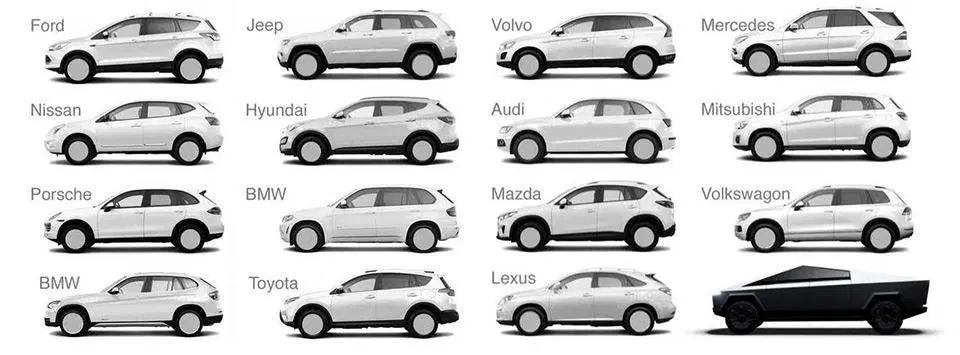
Source: Tesla Facts
Yeahp, it’s an ad for the BMW 😀
So let’s look at how you can develop a PPC strategy that will stand out in the marketplace and enables you to capture a larger portion of the market.
How to Create a High Converting PPC Sales Funnel
To improve the scope of your targeting, you need to create an offer that would attract people interested in purchasing your product or service directly, and those who may wish to do so in the future. You probably use content upgrades, like an eBook, on your website to generate leads.
Unsurprisingly, these offers are effective for a PPC campaign.
Consider the example below for Marriage Max.

This copy is not screaming, “buy now.”
If you click on this link, you’re taken to a custom landing page. The landing page sales copy and design is optimized for PPC. The page has multiple CTA as you scroll down the page. You’ll see this style of page a lot if you click on PPC ads for high value terms.
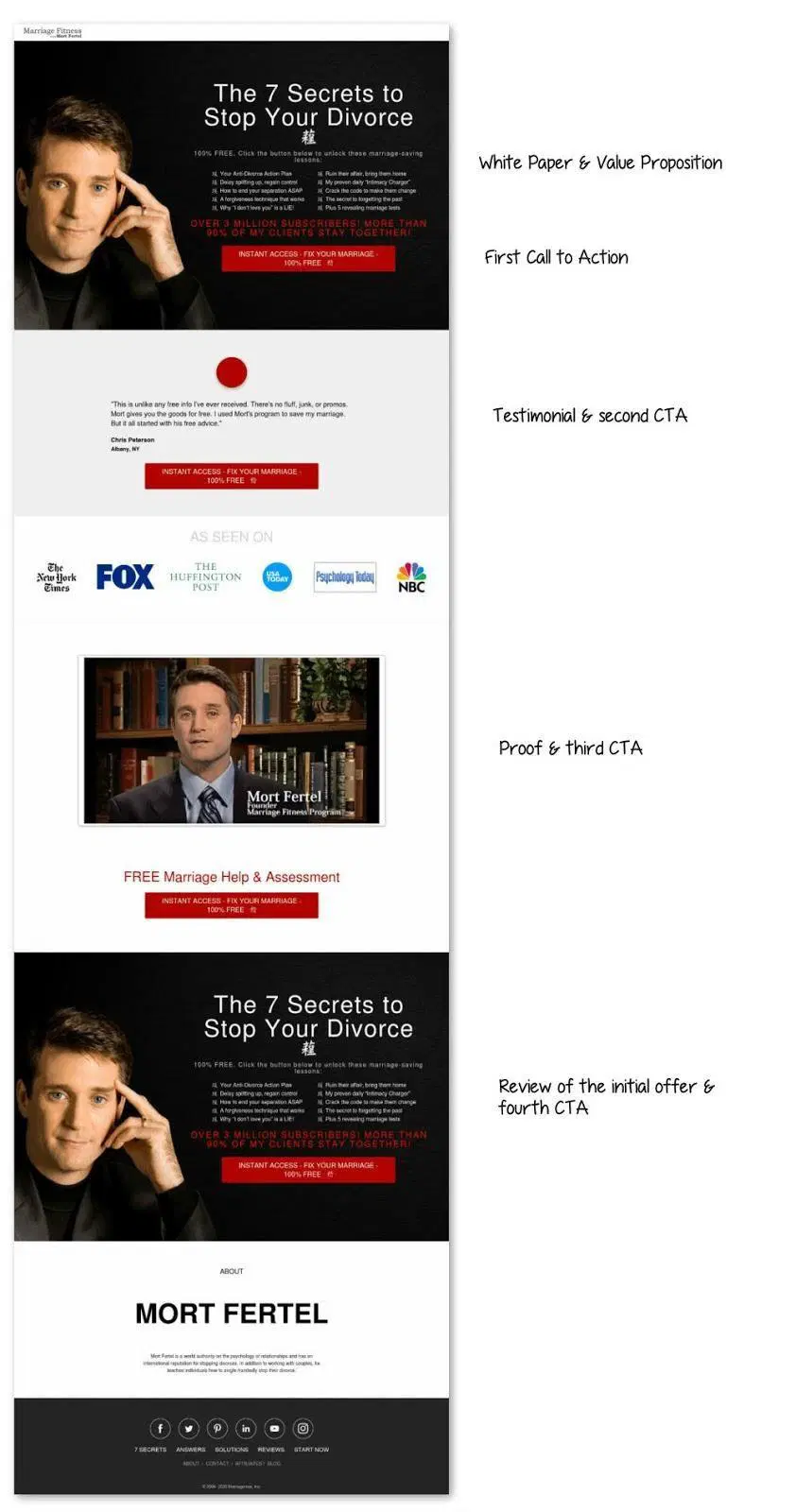
Unlike most PPC landing pages, there is no attempt to make a sale. It’s an offer created for the widest cross-section of visitors.
After you sign up for the PDF, you are directed to a second landing page where you can purchase an information product. This landing page is aimed at those people who are ready to make a purchase. Yet they collected the email addresses of a lot of people who weren’t ready to make a purchase.
Here’s another example.
Loan Studio offers a guide for people who want to refinance their home.
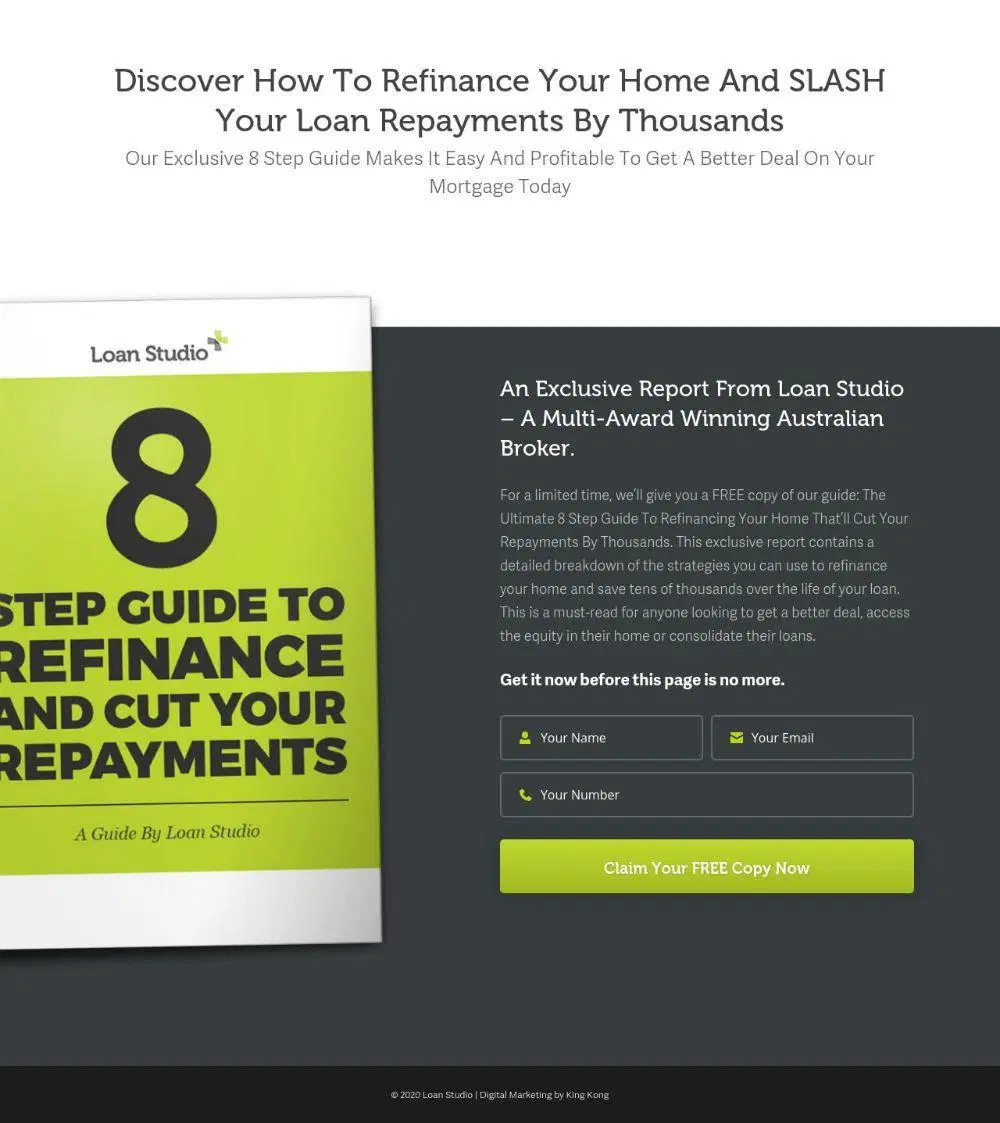
Again, it’s an offer designed to attract a wide cross-section of people.
Once you sign up to get the guide, you are directed to a second landing page. This is a sales page where you are offered a free consultation.

By collecting the contact details of people who aren’t ready to buy, Loan Studio is able to run an email drip campaign to potential leads who aren’t ready to commit to their service. As a result, they’ve collected more leads for the same ad spend.
Below I’ll give you an overview of how to run an email drip campaign to help turn a lead into a sale.
How to Create a Follow On Email Drip Campaign
Email drip campaigns are an automated sequence of emails you send to someone on your email list. You’re probably already using email drip campaigns for a welcome email sequence. If you’re running an ecommerce store, you undoubtedly have a cart abandonment sequence.
The underlying premise of an email drip sequence for this type of campaign is twofold:
- Generate trust with the lead
- Make a sale
One goal really leads into the next. You’ll want to use around four emails in this sequence. Each email should focus on a particular pain point a potential customer is facing. The way I like to break a campaign down is to imagine a person entering the funnel who is sad. Your goal is to make them happy.
Each email in the sequence focuses on a different issue. You can send the person to a landing page with a video, more white papers, or something else. I recommend video as it helps you generate facetime with a person, which is the quickest way to generate trust.
This is a simple strategy that helps generate additional leads. You can find more information about how to run email automation campaigns here. Digital Marketers have a great guide on how to create engaging email sequences.
In case you are confused, here is a visualization of what this PPC funnel looks like.
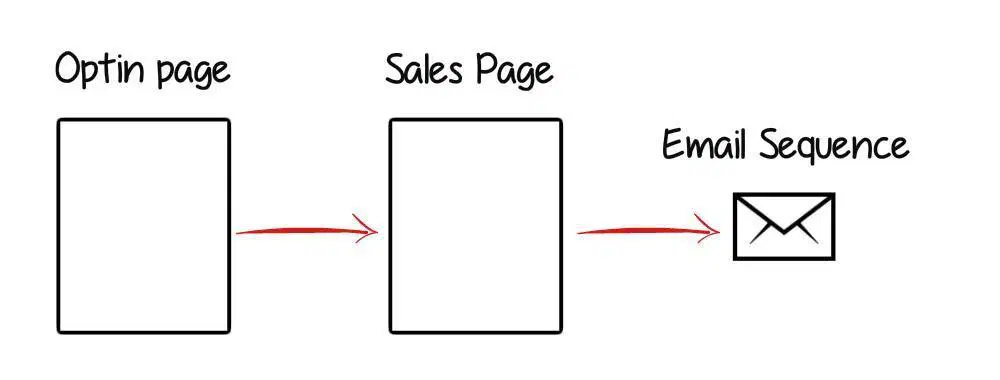
It’s not inherently complex.
The funnel is based on a recognition that most people aren’t ready to make a purchase the first time they encounter a company. This strategy is particularly effective for small to medium sized businesses that don’t have the brand recognition and trust of a company like Amazon, or Agoda.
5 Tips to Maximize Your Google Ads Conversions
In the previous section, I covered how to create a sales funnel for your PPC campaign that will help you generate more leads and push down your Cost Per Acquisition (CPA). Below are five additional Google Ads tips to help improve you generate more sales.
1. Use the Customer Match Feature
Google’s Customer Match gives businesses the ability to create and target their own user lists by uploading their email addresses. These lists can be used in Search, Gmail, or YouTube campaigns.
Take note that these addresses don’t have to be Gmail only. Google can also match non-Gmail addresses to specific users. Check out the matching rates below.
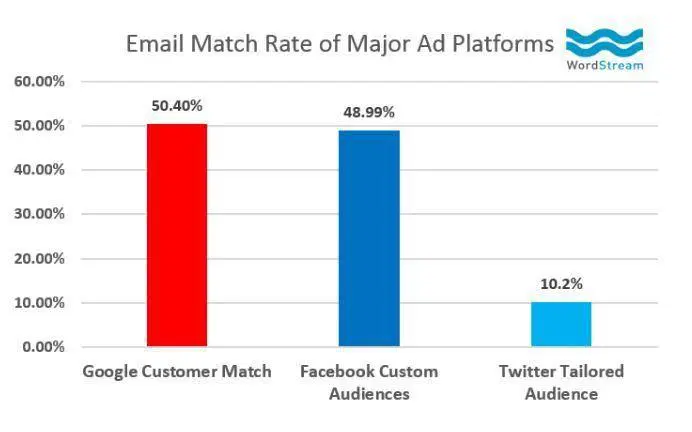
2. Align PPC With Your Email Marketing Efforts
We’ve seen how email marketing can improve your PPC conversions, but this isn’t a one way street. You can also use your PPC efforts to up your email marketing game.
Email marketing should be prioritized by brands. When you send emails after all, you’re also basically reminding potential customers that you exist. Then you try and convert based on this.
The good thing about email marketing is that it is also relatively cheap to do.
For e-commerce brands, you should align your e-mail marketing efforts with PPC as much as possible to increase the effectiveness of both.
3. Ramp Ad Spend Up and Down Based on Holidays
Most e-commerce spending happens over the holidays. According to Adobe Analytics, online holiday shopping revenues in the United States reached $126bn in 2018. That’s about a 17% increase from 2017. In November 2019, US consumers spent a whopping $50.1bn online.
Clearly then, ecommerce brands need to adjust their ad spend based on a promotional calendar. But don’t start doing this right on Christmas Day. Since cost per click tends to increase around the holidays, you should begin allocating more budget for ads just as when you are heading into the holiday.
4. Focus on High AOV (Average Order Value)
Google Ads is crucial for customer acquisition in e-commerce businesses, but it’s not the whole story. In fact, acquiring customers is incredibly expensive. As such, it’s equally important to focus on Average Order Value.
To increase AOV, you will have to do either one of two things. You can convince your customers to purchase more items or persuade them to buy more expensive ones.
You might not know that you can do this with Google Ads.
Let’s take a look at the first one. Amazon, for example, recommends products related to the ones a customer has already purchased or seen. You can also offer discounts after your customer spends a certain amount, or bundle products together and sell them.
You can also distribute online promotions within Google Ads with Google Merchant Promotions.
To convince your customers to buy more expensive items, you can promote a laptop and a mouse as an add-on, rather than just promoting a mouse.
5. Segment and Target Mobile Users Separately
Desktop shoppers are more likely to view items that cost more, such as home appliances. This is why some businesses lower their bids for mobile and focus on desktop customers instead.
But this is a mistake as it can turn away customers who are higher in the funnel. A mobile shopper, after all, can still research a refrigerator to purchase for his or her home.
Instead of ignoring mobile shoppers, use mobile device targeting and create a granular list of negative key-terms. For example, you may want to target mobile users who search for a brand name and “free shipping” rather than those who look up the terms “repairs”.
You can use a writing app to write your content, and then A/B test it to see which one works better in mobile devices.
How to Improve your Google Ads Conversions
Paid advertising offers one of the fastest ways to grow your audience. That is of course assuming you can profit from your ads. In this article, I outlined how you can do this by
You should then align PPC with your email marketing efforts, as well as making an effort to improve your funnel by promoting content as well as products. Finally, you should segment and target mobile users separately and create dedicated landing pages to increase sales.
Now it’s over to you. Check out which strategies work best for your brand and implement them. You’ll see how you’ll be a cut above the rest in no time.
Owen Baker is a content marketer for Voila Norbert, an online email verification tool. He has spent most of the last decade working online for a range of marketing companies. When he’s not busy writing, you can find him in the kitchen mastering new dishes.
